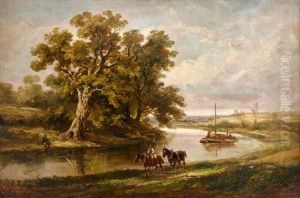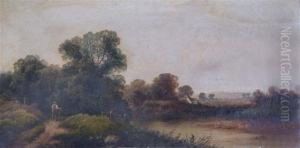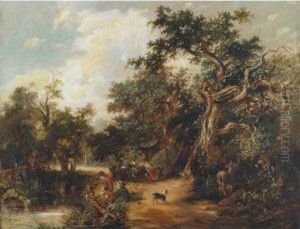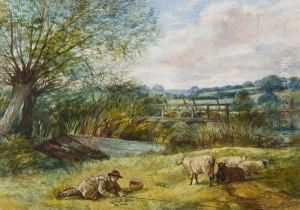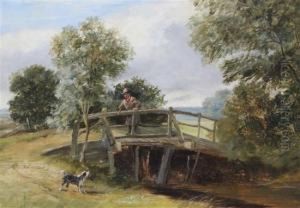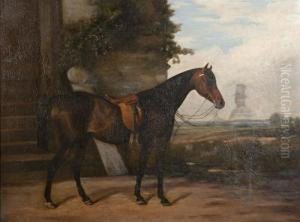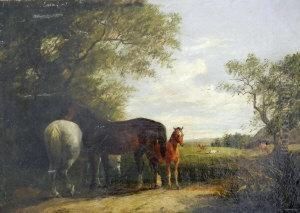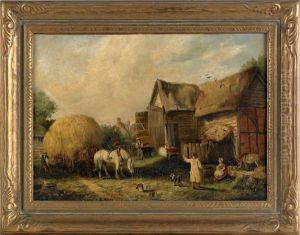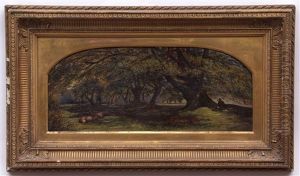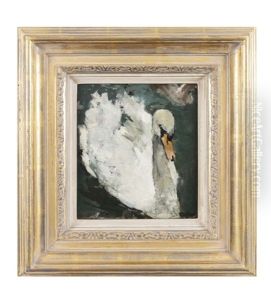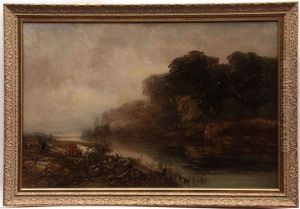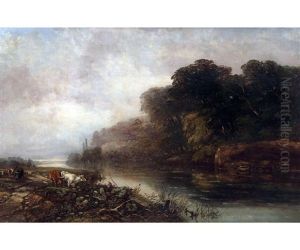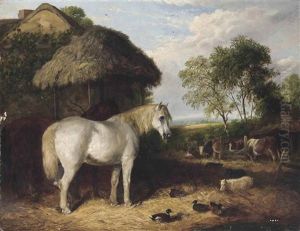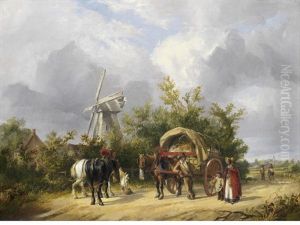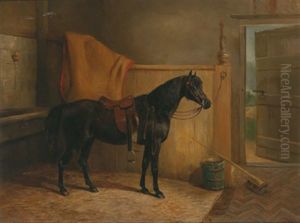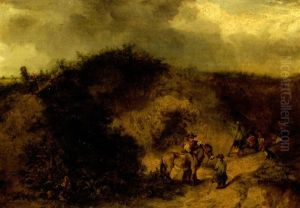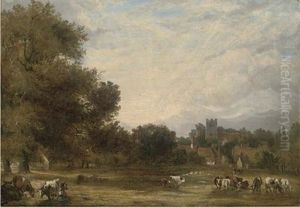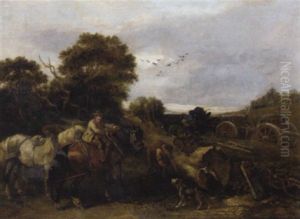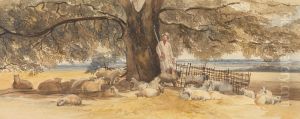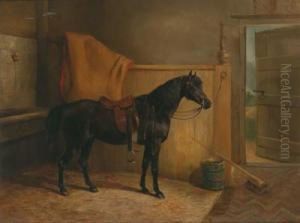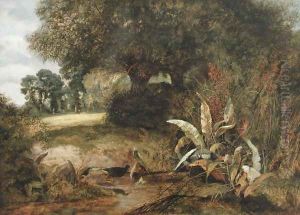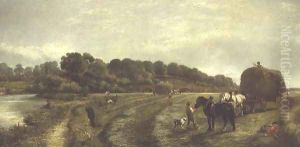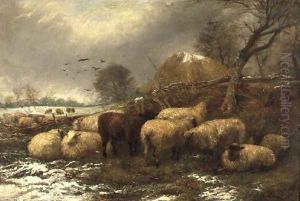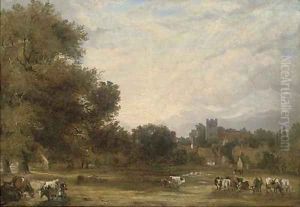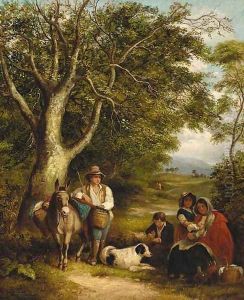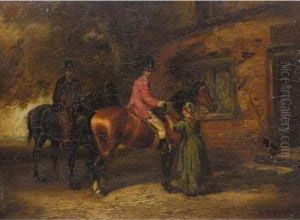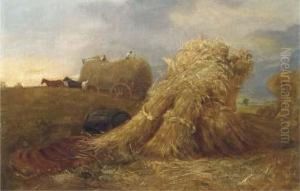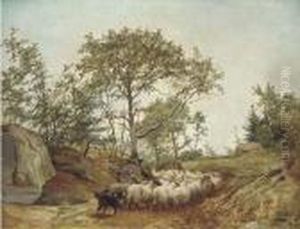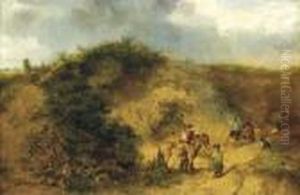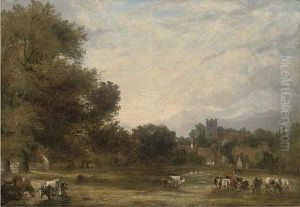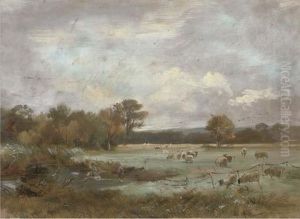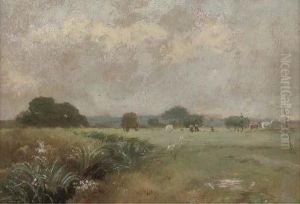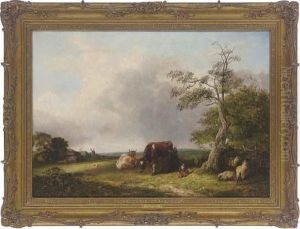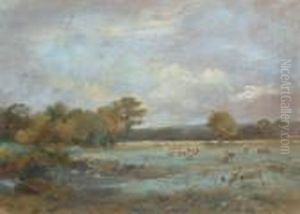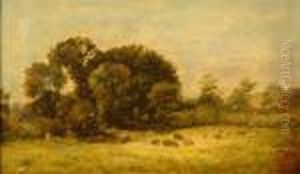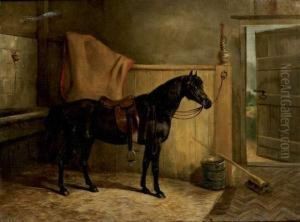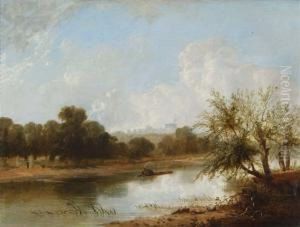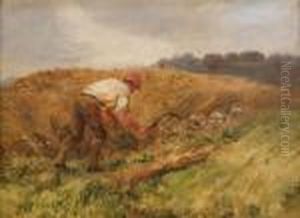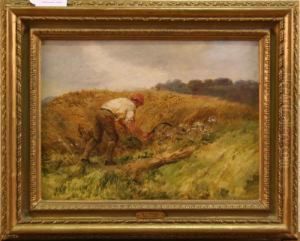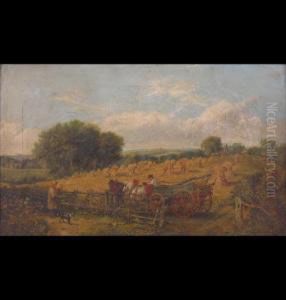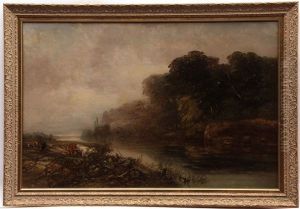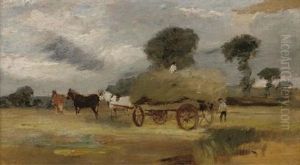Arthur J. Stark Paintings
Arthur James Stark was an English landscape painter who was part of the Norwich School of painters, which emerged in the early 19th century in Norwich, Norfolk. Born on August 6, 1831, in Norwich, he was the son of Michael Stark, a Scottish dyer, and Elizabeth Stark. His father was a follower of John Crome, one of the founders of the Norwich School, and this connection likely influenced Arthur's early interest in art.
Stark's education in art began with his father's guidance, and he soon showed a talent for painting landscapes. He was associated with the Norwich School but later moved to London, where he became a successful painter. Stark's work typically featured the serene and lush countryside, often including cattle and other pastoral elements. He was influenced by the Dutch landscape painters and the work of John Constable, which is evident in his meticulous attention to the play of light and shadow in his scenes.
Throughout his career, Arthur Stark exhibited regularly at the Royal Academy and the British Institution. His paintings were well-received, and he gained a reputation for his ability to capture the beauty of the English landscape. Stark was not only an accomplished painter but also a teacher, sharing his knowledge and skills with a new generation of artists.
Arthur Stark's life was marked by his dedication to art and his ability to evoke the spirit of the English countryside. His works are a testament to the Norwich School's significance and its contribution to British landscape painting. Stark passed away on January 23, 1919, leaving behind a rich legacy that continues to be appreciated by art enthusiasts and historians alike.
